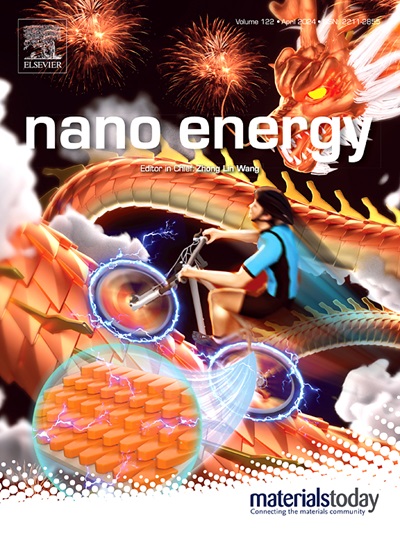Mutualistic Symbiotic Wireless Node for Next-Era Smart Transportation
IF 16.8
1区 材料科学
Q1 CHEMISTRY, PHYSICAL
引用次数: 0
Abstract
Giant sensor networks are increasingly deployed in urban environments to advance smart cities and transportation systems, necessitating numerous integrated power solutions involving batteries and cables. This work presents a green, compact, mutualistic symbiotic power solution for onboard vehicle sensors, integrating dissipated energy harvesting with wireless sensing to achieve long-term, battery-less, and real-time wireless monitoring with high sampling frequency. We present high-performance piezoelectric energy harvesters featuring novel quasi-two-dimensional designs for generating electricity from engine vibrations and functioning in tight and confined spaces. Our solution breaks limitations from wired connections and avoids battery issues while enhancing space and energy utilization. We provide theoretical and experimental insights into the statical and dynamical design theory of the harvester and its performance improvements. Vibration tests show that a 54.3-gram harvester achieves high output power (21.2 mW) and wide bandwidth (8.7 Hz) under weak excitation (0.2 g). Its power-generation performance is enhanced to over 242% of the reported maximum. We also demonstrate the stable performance of the harvester with a self-developed wireless sensor system installed in a driving vehicle. With an improved circuit and a well-adjusted harvester prototype, the system even achieves a wireless sampling frequency exceeding 40 Hz—more than 55 times the reported maximum.

求助全文
约1分钟内获得全文
求助全文
来源期刊

Nano Energy
CHEMISTRY, PHYSICAL-NANOSCIENCE & NANOTECHNOLOGY
CiteScore
30.30
自引率
7.40%
发文量
1207
审稿时长
23 days
期刊介绍:
Nano Energy is a multidisciplinary, rapid-publication forum of original peer-reviewed contributions on the science and engineering of nanomaterials and nanodevices used in all forms of energy harvesting, conversion, storage, utilization and policy. Through its mixture of articles, reviews, communications, research news, and information on key developments, Nano Energy provides a comprehensive coverage of this exciting and dynamic field which joins nanoscience and nanotechnology with energy science. The journal is relevant to all those who are interested in nanomaterials solutions to the energy problem.
Nano Energy publishes original experimental and theoretical research on all aspects of energy-related research which utilizes nanomaterials and nanotechnology. Manuscripts of four types are considered: review articles which inform readers of the latest research and advances in energy science; rapid communications which feature exciting research breakthroughs in the field; full-length articles which report comprehensive research developments; and news and opinions which comment on topical issues or express views on the developments in related fields.
 求助内容:
求助内容: 应助结果提醒方式:
应助结果提醒方式:


